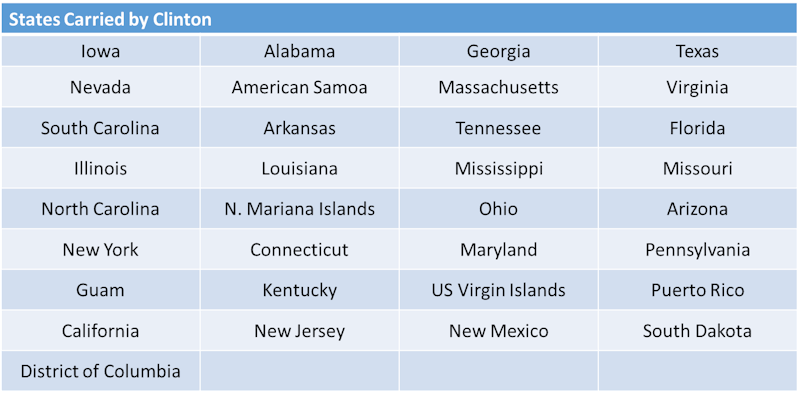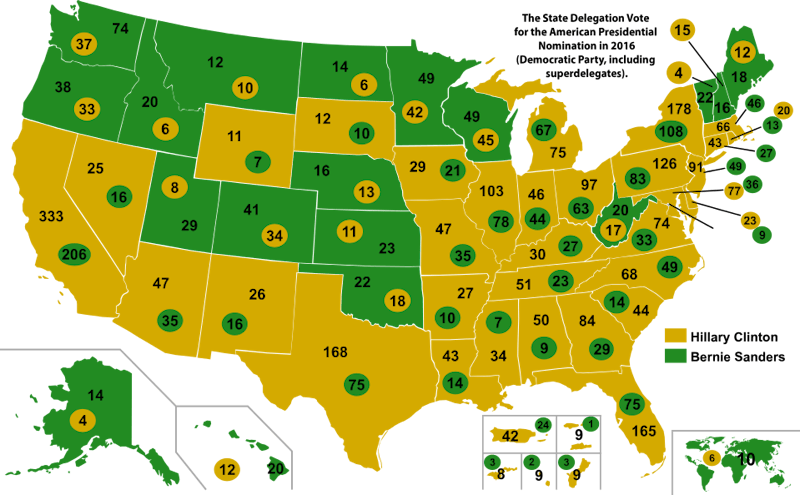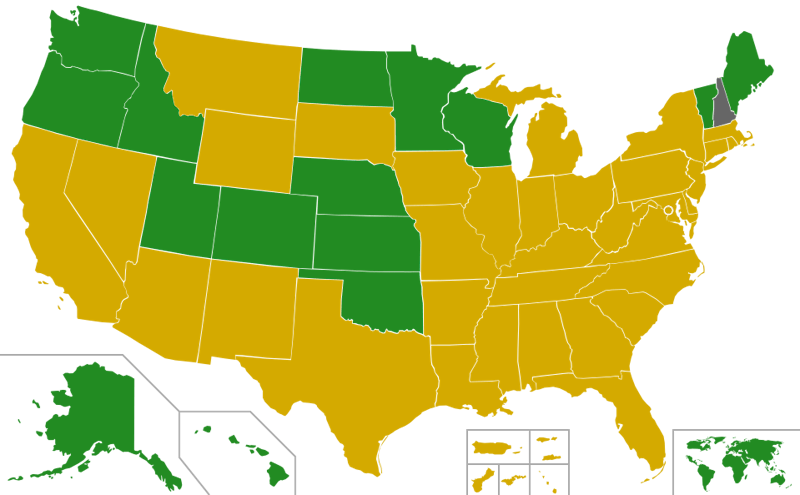Study Notes
Democratic Primaries 2016
- Level:
- AS, A-Level
- Board:
- AQA, Edexcel, OCR, Eduqas, WJEC
Last updated 22 Mar 2021
2016 saw the Democratic Party hold its primaries for its Presidential Nominee for the Presidential Election in November 2016. The primaries ran concurrently to the Republican Primaries. Both parties held primaries to decide candidates. Results were finally announced at the Democratic National Convention which was held in Philadelphia.
Background:
Initially there were three declared candidates for the Democratic nomination heading into the Iowa Caucus on February 1st 2016. There had been three others but these dropped out ahead of the caucus.

There other calls for differing candidates throughout the primary process including attempts to get Senator Elizabeth Warren and Vice President Joe Biden to run. As the campaign came to a close, it was even suggested by some Democratic Party activists that Michelle Obama run for the nomination.
The Primaries and Caucuses
The season kicked off as is tradition with the Iowa caucus held on February 1st 2016. The process ran into early June with the last primary being held in the District of Columbia. During the season it is not just the states which get to vote. Other areas of the US get to vote including the overseas territories such as Guam and the US Virgin Islands. In addition to this, those Democrats living overseas also get to vote in the primaries.
Under Democratic Party rules, there can be no winner take all contests in the primary and caucus process. This contrasts with the Republican Party which has rules that can result in a winner take all system. Therefore both Clinton and Sanders would have won some delegates for the convention in every race. The table below shows the candidate who came first in each states primary or caucus.



The Democratic National Convention:

The Democratic National Convention was held in Philadelphia in July 2016. Ahead of the convention, Clinton had become the presumptive nominee for the party when her delegate count crossed the required mark in early June. When the roll call was called on the convention floor for the nomination, Clinton received some of Sander's delegates who switched to her in the interests of party unity. The map below showcases which states voted for which candidate from the convention floor.

During the convention, Clinton selected Tim Kaine a junior senator from Virginia as her running mate.
You might also like
Bicameralism
Study Notes
Grab your diaries! Here is the debate schedule!
16th October 2015
Imperial Presidency
Study Notes
Voting Reform (US)
Study Notes

The Washington Post's Fact Checker - juicy untruths from US Politics
4th December 2015
Bill Clinton
Study Notes
Recommended podcast title
5th March 2021